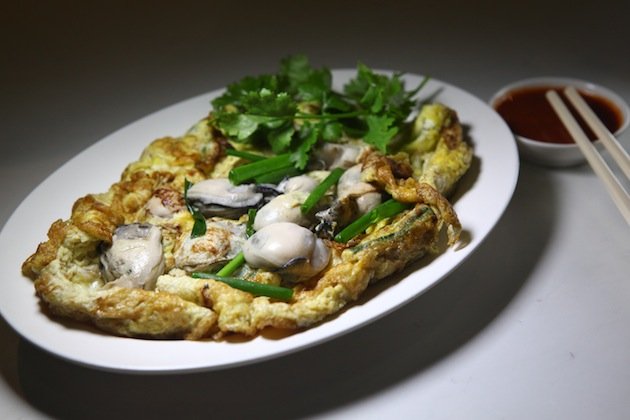
Oyster Omelette Was A Replacement Of Bakchang?
By Sheere Ng - Wednesday, May 08, 2013
Oyster omelette is a wonderful union between soft and moist beaten eggs, and lightly seared fresh umami oysters. Depending on who and where you buy from, sometimes, more potato starch is thrown into the combination to give it a gummy texture. Otherwise, it is pan-fried to crisp or both, done artfully.
No matter how one sees an oyster omelette, it looks nothing like a bak chang (rice dumpling). But did you know 400 years ago, it replaced the rice dumpling to commemorate the ancient Chinese poet, Qu Yuan?
In 1661, Ming dynasty chief commander Koxinga led 400 battleships to fight against the Dutch East India Company which occupied the Island of Formosa (present day Taiwan). The Dutch colonists, prepared for a long-standing battle, acquired all the food provisions on the island beforehand. Koxinga’s troops had no choice but to rely on foods like sweet potatoes and beans.
Come fifth day of the fifth month on the lunar calendar, also known as the Duanwu or Dragon Boat Festival, Koxinga had no grains to prepare rice dumplings to offer Qu Yuan, who was worshipped as a river god. But it was an important ceremony for his troops which specialises in sea battles, so instead they used sweet potato flour, beans sprouts (mung beans were used on ships to protect the ceramics from breakage) and oysters and prawns from the surrounding ocean to make oyster omelette, then referred as 煎䭔(jian dui), according to Casual Goumet Tainan, a book that features southern Taiwan’s street food.
Koxinga won the war in the following year, but a few months later, just three days after the Duanwu festival, he passed on. To commemorate him, the commoners in Formosa cooked oyster omelette during the five day of the fifth lunar month for the next three centuries, before switching back to rice dumplings.
Today, oyster omelette, known as 蚵仔煎 in Taiwan, is ubiquitous in the street markets. Unlike the southeast Asian version, which was introduced to this part of the world by the Teochew and Fujian immigrants, the Taiwanese version is doused with a sweet-tangy orangey sauce.



